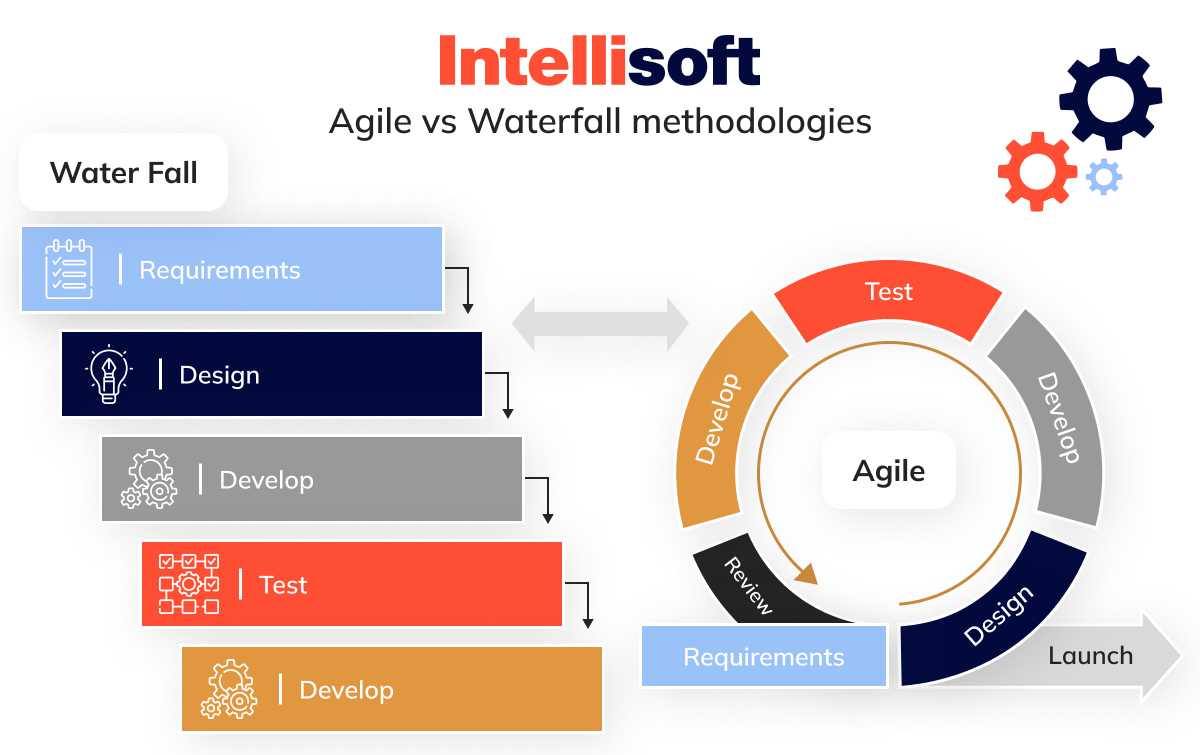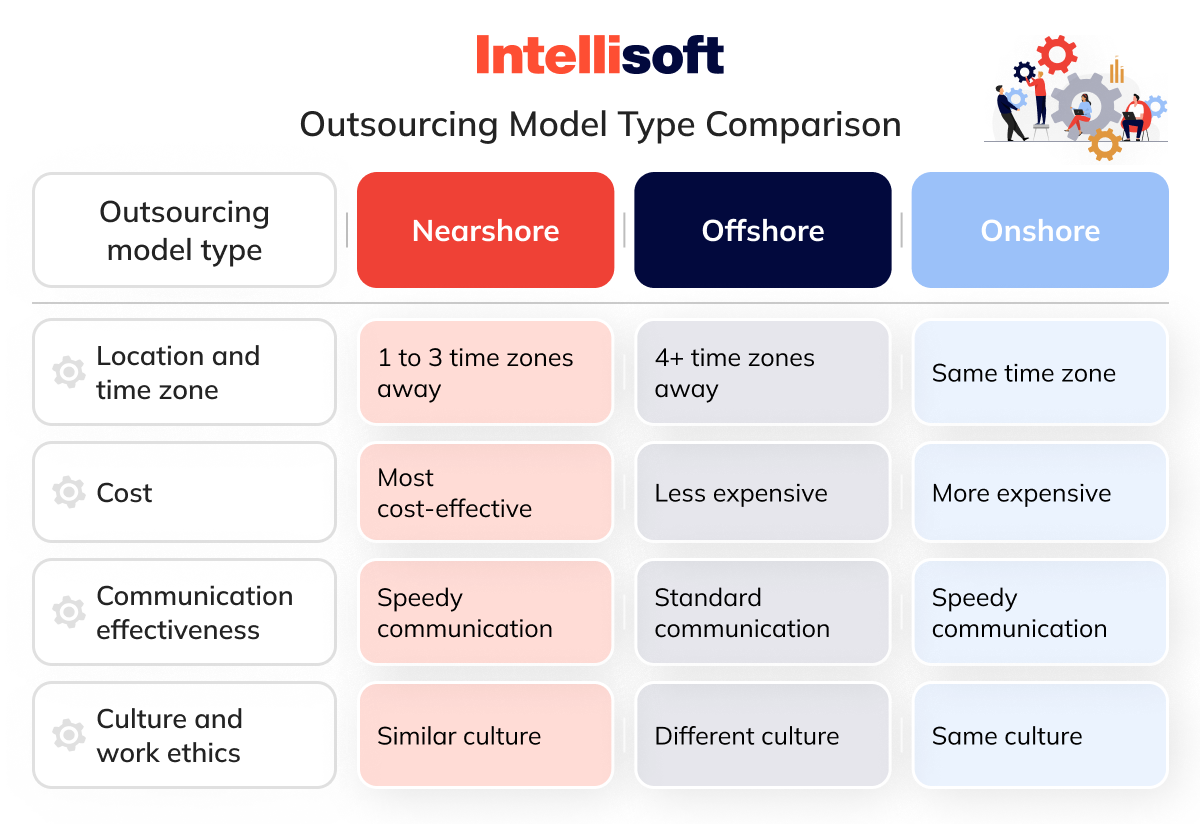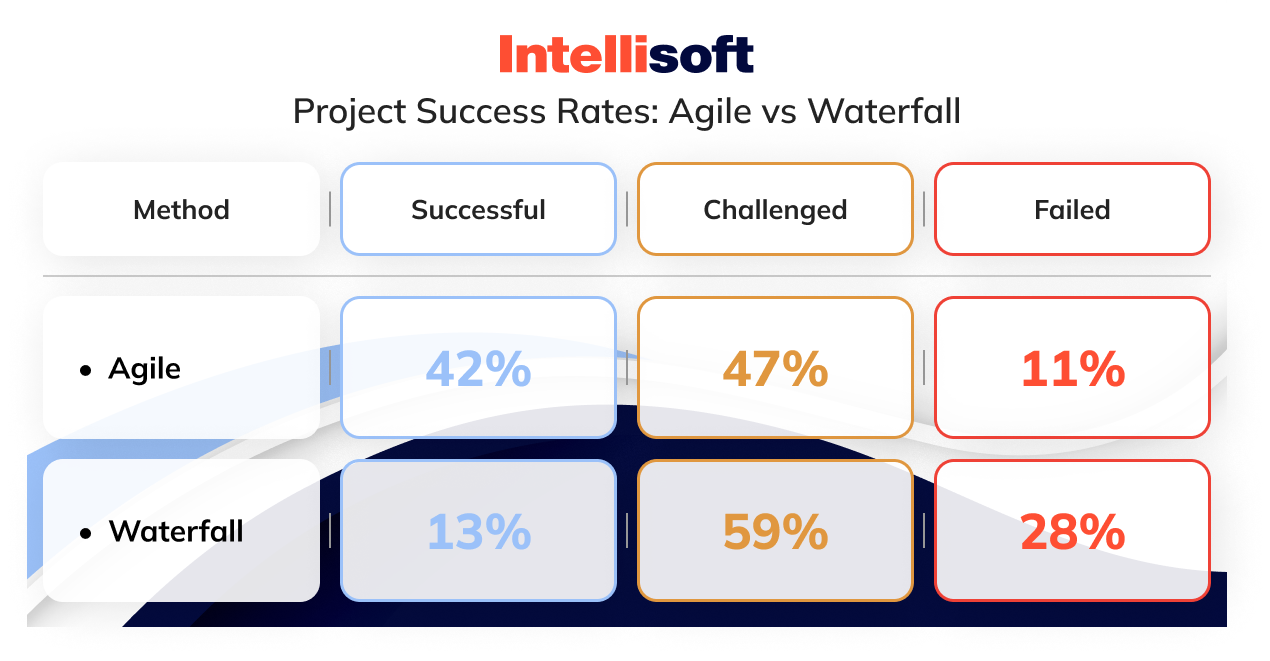You may not have noticed, but we are already living in the future of software development! The classic model of the in-house team is becoming less and less relevant in modern business. According to Statista, almost 70% of the tech workforce is now working remotely. The past several years have shown us that nearshore agile software development teams can be even more productive than in-office teams. Nearly all companies are using the global pool of tech talent. In this way, they are becoming more agile, delivering stunning results, and saving money.
Of course, outsourcing is not a new trend, but it surged after the pandemic. All signs show that this trend will continue in the foreseeable future. The key questions are: How do you maintain flexibility while working with a remote team? How do you keep your development process efficient? That’s where agile methodology to nearshore development comes through.
This article is committed to informing you that a nearshore developers team can mean significant business value and competitive advantage for your business. We will have a quick look at agile development and its benefits, what tools to use to ensure everything goes smoothly, and make sure you’ve fastened your seatbelts for the revolution of your development strategy with IntelliSoft, your trusted partner in outsourcing any software development project.
Table of Contents
Understanding Agile Software Development
Agile software development is flexible, adaptable, and highly effective. It focuses on collaboration, adaptability, and continuous improvement. Unlike traditional development methods, which follow a strict, step-by-step process, agile methods embrace change and prioritize regular customer interaction. This approach helps teams respond quickly to new requirements and unexpected changes, ensuring the final product meets customer needs perfectly.

Key Principles of Agile Development
Agile development is based on key principles that differentiate it from other methods. These principles, highlighted in the Agile Manifesto, stress the importance of communication, flexibility, and customer satisfaction. These principles ensure that agile development is a dynamic process focused on delivering value through continuous improvement and close collaboration with stakeholders.
Advantages of Agile Development Methodologies
Agile development methods offer several advantages over traditional approaches, making them popular in modern software development. Here are some key benefits:
Increased Customer Satisfaction
By engaging customers throughout the development process and consistently seeking their feedback, agile teams can ensure the final product meets or surpasses customer expectations. This ongoing dialogue helps create a product that addresses the user’s needs and problems.
Enhanced Transparency and Visibility
Agile promotes a collaborative environment where all team members are actively involved. This transparency leads to better decision-making and helps recognize and settle possible problems early in the development process, reducing risks.
Improved Flexibility and Adaptability
The iterative nature of agile development allows teams to adjust to alterations in project demands or market situations. This flexibility enables projects to evolve in response to new information, ensuring the final product remains relevant and useful.
Faster Time-to-Market
Agile’s focus on delivering small, functional software increments in short cycles (sprints) allows for a faster time to market. This approach enables businesses to release features and updates more frequently, providing immediate value to users.
Better Quality Products
Continuous testing and integration in agile methodologies ensure defects are identified and addressed early. This leads to higher quality products and fewer issues in the final release.
Increased Team Morale
Agile teams often report higher morale due to the collaborative nature of the process and the sense of ownership over their work. Regular feedback and quickly seeing their contributions’ impact can be highly motivating.
How Does an Agile Team Operate?
Agile teams are central to the agile methodology. They typically consist of members with different skills who work together in a flexible environment to deliver high-quality software products.
Think of Agile development like a relay race. Instead of running a marathon simultaneously, the team breaks the project into short, manageable sprints, usually lasting one to four weeks. Each sprint is like a lap, focusing on delivering a working part of the software that includes prioritized features and requirements identified by the product owner.
At the start of each sprint, the team comes together to define the scope and objectives. They break down tasks and estimate the effort required, ensuring everyone understands their role. Daily meetings, known as stand-ups, are held where team members update each other on their progress, discuss challenges, and plan their tasks for the day. This daily check-in is like a team huddle, keeping everyone aligned and addressing any issues quickly.
At the end of a sprint, the team holds a review to present the completed work to stakeholders. This session is like a mini demo. It provides an opportunity to gather feedback and ensure the project is on track. After the sprint review, the team holds a retrospective to reflect on what went well, what didn’t, and how they can improve. This continuous improvement loop is like a debrief, crucial for agile success.
Agile teams use various collaboration tools to manage tasks, track progress, and facilitate communication. Tools such as Jira, Asana, and Trello help with project management, while platforms like Slack, Microsoft Teams, and Zoom support real-time collaboration and meetings. This combination of structured sprints, regular check-ins, and powerful tools ensures that agile software development is flexible, collaborative, and focused on customer satisfaction.
How the Agile Approach Enhances Nearshore Software Development
Nearshore software development and Agile methodologies are a perfect match. Agile nearshoring involves a lot of collaboration, teamwork, and smooth communication, which are key features of Agile development.
Nearshoring lets companies access a wide pool of talented developers in similar time zones. Agile methods make sure the process is flexible, adaptable, and efficient. Using Agile techniques instead of a traditional hierarchical approach can greatly improve a company’s success.
Agile software development is popular for a good reason. Both managers and developers see the benefits of Agile principles, which focus on iterative processes and teamwork. Thanks to continuous testing and feedback, this leads to a stronger, more functional final product.
Implementing Agile in Nearshore Development: A Case Study
Let’s look at a fictional example with Pulse Gym, a fitness and wellness company creating a mobile app. Their team includes in-house developers in the US and nearshore developers in Latin America. They follow an eight-week release cycle, divided into three two-week sprints and one final sprint for fixes and testing.
Pulse Gym uses Agile practices like backlog grooming, planning poker, daily stand-ups, sprint planning, show-and-tells, and retrospectives. These practices ensure all team members, including nearshore developers, are fully involved and communicate regularly.
Daily Tasks and Shared Work
At the start of each sprint, the team agrees on the product backlog. They use online planning poker to estimate and size user stories, ensuring everyone understands the tasks ahead.
Daily stand-up meetings happen at 9:15 or 9:30 AM. Team members give updates, discuss challenges, and plan tasks. Nearshore developers join via voice calls, and a local team member updates physical post-it notes on a board with their input. This info is then synced with Jira, the main project tracking tool.
Jira is the primary hub for project information, which is updated throughout the day to track progress. The physical board is also kept in sync with Jira, ensuring all team members understand the project’s status.
At the end of each sprint, the team reviews and reflects on their work. These sessions, which mix online and offline formats, help the team think about what went well, what didn’t, and how to improve. Nearshore developers join via video or voice calls, and their feedback is included in the team’s discussion.
Show-and-tell sessions include all project teams, even those not working on the specific project. They discuss features delivered in a release that benefit all teams. Nearshore developers join these meetings using Microsoft Teams.
Essential Software Tools for Nearshore Agile Development
Effective Agile development relies on various tools for planning, collaboration, and project management, especially in a nearshore setting. Here are some key tools used by Agile teams:
Project Planning and Management Tools
Asana, ClickUp, Jira
These tools offer dashboards to coordinate work activities, track tickets, highlight blockers, and show what each team member is working on. They also serve as repositories for user stories and bug tracking, keeping all project info centralized and accessible.
Estimation and Sizing Tools
Planning Poker, Pointing Poker
Online tools like Planning Poker and Pointing Poker help estimate and size user stories during backlog grooming meetings, helping the team agree on the effort needed for each task.
Code Collaboration and Source Control
Bitbucket, GitHub, GitLab
These platforms provide private Git repositories with integrations for continuous integration, delivery, and deployment. They facilitate code collaboration through pull requests, code reviews, and inline comments for interactive discussions.
Communication and Collaboration Tools
Microsoft Teams, Google Meet, Zoom
These platforms support on-demand collaboration, online meetings, and video conferencing. They are crucial for show-and-tell sessions, daily stand-ups, and other collaborative activities, ensuring smooth communication across the team.
Google Workspace
This suite of tools integrates Agile and DevOps tools such as Jira, GitHub, Datadog, and PagerDuty, improving developer agility and efficiency.
PagerDuty
A platform for agile incident management, PagerDuty handles code commits, maintenance tasks, and tracking changes, including user stories, tickets, and bug fixes.
Gmail, Outlook
Email and calendar tools, such as Gmail and Outlook, are used to schedule tasks and meetings, ensuring that all team members are aware of project-related activities.
By using these tools, nearshore Agile teams can maintain high levels of communication, transparency, and efficiency, ensuring projects run smoothly and deliver high-quality results. Incorporating Agile methodologies in nearshore software development combines the strengths of both approaches, improving flexibility, collaboration, and project success.
Related readings:
- Nearshoring Business-Processes Outsourcing
- IT Nearshoring: What Is It and for Who?
- Nearshoring, Offshoring and Onshoring: Selecting The Right Model
- IT Sourcing in Ukraine: The Best Hiring Strategies
- IT Offshore Outsourcing: Key Pros and Pros
Maximize Your Gains with Nearshore Agile Development
Tech companies are increasingly working with vendors abroad to access a larger talent pool and reduce costs. However, traditional outsourcing to distant countries can bring challenges such as time zone differences, cultural misunderstandings, and less control over the project. Agile nearshoring methodologies offer the benefits of outsourcing while minimizing these drawbacks, making software development more efficient and effective.

Cost-Effectiveness
One of the primary reasons companies choose to outsource is to reduce costs. Nearshore agile software development is more cost-effective than hiring local custom software developers or traditional offshore outsourcing. Software development nearshore agile methodologies further enhance cost savings by increasing project efficiency and reducing the risk of project failure.
Agile nearshore development uses an iterative process for continuous improvement and adjustments. This flexibility ensures resources are used more efficiently, lowering overall project costs. Unlike the rigid waterfall methodology, which can lead to higher costs due to significant rework, agile nearshore development adapts smoothly to changes, avoiding expensive setbacks.

Flexibility
Every project faces challenges, but the agile approach is designed to tackle them head-on. Nearshore agile development makes incremental progress while iterating to address new issues as they arise. This proactive approach ensures the development process continues smoothly without major disruptions.
The core idea behind agile nearshore development is to stay flexible and responsive. Development teams are equipped to promptly handle alerts and issues, ensuring the project stays on track. This adaptability is key to providing robust, reliable, and agile nearshore software development services that meet clients’ evolving needs.
Scalability and Fast Recruitment
Nearshoring offers the benefits of cost-effective hiring and quick recruitment. A reliable nearshore agile development partner can quickly provide the experts needed for your project, often within just a few weeks. This contrasts with the lengthy process of recruiting and onboarding local talent, which can take months.
Imagine needing five skilled developers for your project. You could spend months searching for the right candidates, reviewing resumes, conducting interviews, and finally assembling a team. Alternatively, partnering with an agile nearshore software development company with the necessary talent can streamline this process. The right experts can join your project and deliver results much faster.
Moreover, nearshore agile development makes scaling your team up or down easier. Thanks to the agile framework, you can allocate additional resources as needed, ensuring your team size matches the project’s requirements at any given time.
Cultural Compatibility and Work Ethics
An often overlooked benefit of nearshoring is the cultural proximity and similar work ethics between the client and the development team. Working with a team with similar values and cultural understandings can significantly enhance collaboration and communication.
Nearshore teams usually operate within similar time zones, making real-time communication easier and more effective. Add to this the language proficiency and high skill level of nearshore developers, and you get a team well-aligned with your business goals and working style. This alignment helps build a cohesive and productive working relationship, ensuring the project moves forward smoothly.
Enhance Business Value
Combining the benefits of agile methodologies with nearshoring can significantly enhance your projects’ efficiency. This combination allows you to cut costs, reduce time to market, and increase ROI. Agile nearshore development teams can adapt quickly, ensuring your projects stay relevant and valuable.
Working with an agile team enables you to stack the advantages of both methodologies, reducing potential drawbacks. The result is a highly efficient, cost-effective, and responsive development process that maximizes your business value.
What to Consider When Hiring an Agile Nearshore Development Provider
When you’re preparing to partner with a nearshore Agile development team, you want to make sure that you have the core elements in place to deliver a successful collaboration. Here are some key aspects to consider before starting Agile nearshore outsourcing:

Define Your Project Scope Clearly
Before launching your Agile nearshore outsourcing strategy, you need a well-defined project scope and clear, concise goals. Know what you aim to achieve, the features and functionalities needed, and the overall timeline. A detailed strategy gives your Agile software development nearshore partner clear insight into your requirements and expectations. This clarity helps assemble the right Agile team to meet your needs and deliver quality results effectively.
Cultivate Seamless Collaboration
Effective communication and collaboration are essential for any successful Agile project, especially with nearshore teams. Ensure all team members understand the software development life cycle (SDLC) and communication protocols. Nearshore developers, like your local team members, should be integrated into your project and participate in all meetings, updates, and discussions. Establish clear, reliable communication channels from the beginning to keep everyone in the loop and collaborate effectively.
Be Agile Throughout the Project
An Agile approach requires flexibility and adaptability from both the client and the development team. Be prepared to adjust and iterate on the project as it progresses. Maintaining an Agile mindset, where continuous improvement and responsiveness to change are key, is essential. Regular sprint reviews, retrospectives, and adaptive planning help keep the project Agile and responsive to new insights or changing requirements.
Develop and Sustain Trust
Trust is crucial for a successful Agile software development nearshore project. Due to geographical separation, establishing and maintaining trust between your local team and the nearshore developers is vital. Achieve this through regular project updates, transparent progress reports, and promptly addressing concerns. Engaging in team-building activities, even remotely, can strengthen bonds and ensure everyone remains aligned with the project’s goals and values.
Ensure Cultural and Operational Alignment
While nearshoring offers cultural proximity, ensuring your operational practices and work ethics align with your nearshore partner is important. Understand their work culture and communication styles and ensure mutual respect and understanding. Language proficiency and time zone compatibility also facilitate smooth interactions and collaboration.
Use the Right Tools and Technologies
Using the right tools can significantly enhance collaboration and efficiency in a nearshore Agile environment. Tools for project management, code collaboration, communication, and continuous integration/deployment are essential. Platforms such as Jira, GitHub, Microsoft Teams, and others help keep the workflow transparent, maintain code quality, and ensure seamless communication across the team.
Focus on Continuous Improvement
Always aim for continuous improvement, a fundamental principle of Agile methodologies. Regularly assess the project’s progress, gather feedback, and make necessary adjustments to improve processes and outcomes. This approach enhances the product’s quality and fosters a culture of learning and growth within the team.
These aspects will set the stage for a successful partnership with a nearshore Agile development team. They are key to leveraging the full benefits of Agile methodologies in a nearshore setting.
Conclusion
Nearshore agile software development offers a dynamic and efficient solution for businesses aiming to outsource their software projects while maintaining high quality and flexibility. The success of such initiatives lies in collaborating with the right team, one that understands your vision and can execute it with precision and agility.
At IntelliSoft, we specialize in providing top-tier nearshore agile software development services. Our expert teams in strategic regions like Denmark, Poland, Ukraine, and beyond have a proven track record of delivering outstanding results. We prioritize clear and consistent communication, ensuring your project runs smoothly and meets all your business objectives.
If you’re ready to take your software development to the next level, IntelliSoft is here to help. Our clients trust us to extend their teams with highly skilled professionals, leading to exceptional outcomes. Join the ranks of satisfied clients who have leveraged our expertise to achieve superior software products. Reach out to us and begin your journey toward future success.










